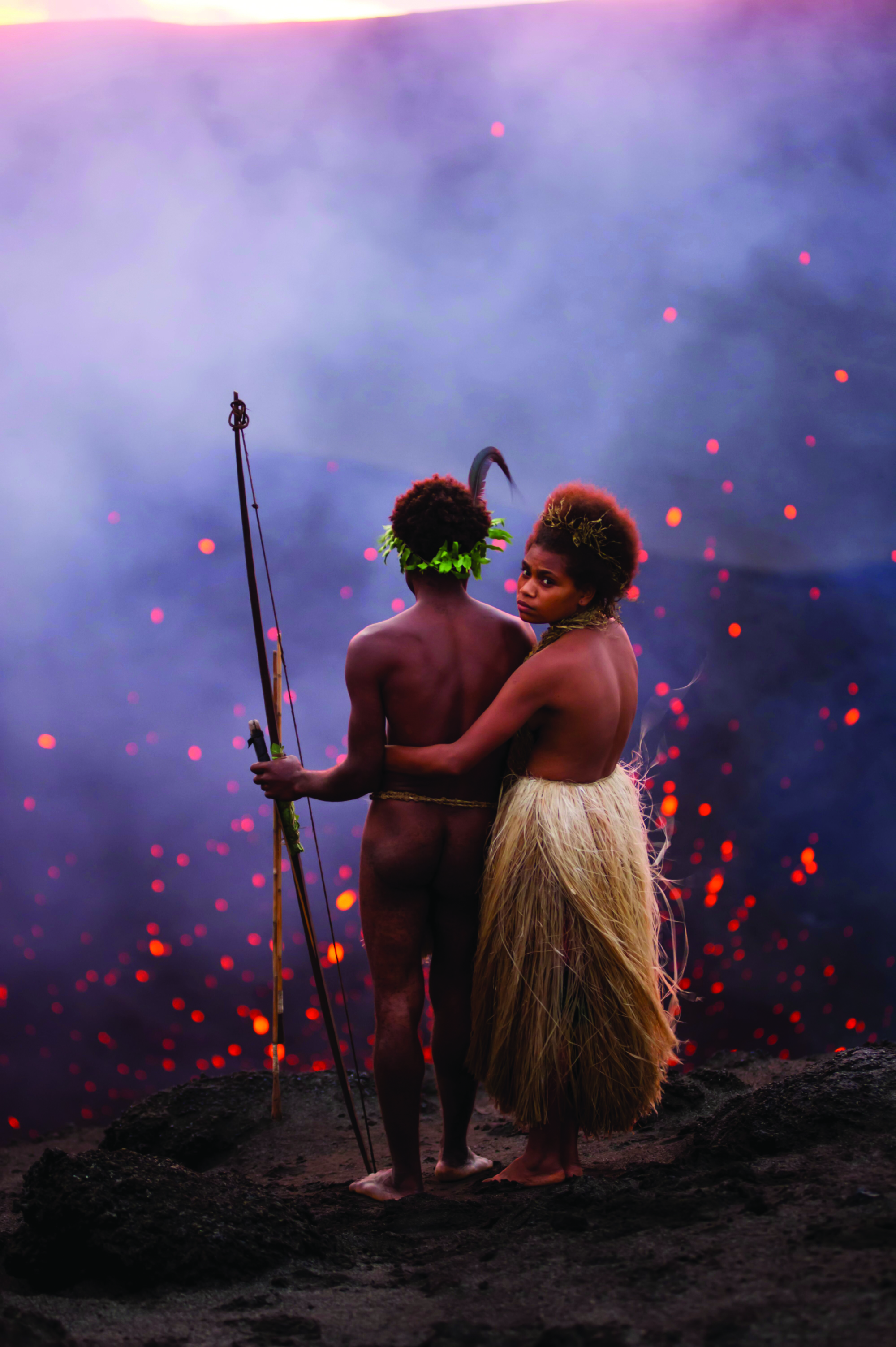The South Pacific region is not one that audiences regularly get to see on screens. Despite its enviable aesthetic appeal and rich history, the remoteness of its island nations and the limited resources and cinematic education available no doubt pose difficulties for people hoping to make movies there. Definitely more confounding is the fact that international filmmakers regularly step wide of the region, with only a small number of American and other Western productions having ever filmed in the area. This is in spite of living in a time when nearby, in South-East Asia, digital technologies have become a significant boon to local film industries, particularly in nations like Cambodia and the Philippines, which have recovered from the declines of their national cinemas. We have also seen the emergence of renowned filmmakers like Apichatpong Weerasethakul from Thailand as well as high-profile co-productions like The Rocket (Kim Mordaunt, 2013), an Australian film made in Laos.
This is where Tanna (Bentley Dean & Martin Butler, 2015) comes in. The titular island forms part of the nation of Vanuatu, which has had only a couple of brief flirtations with international productions: famed marooned-teen romance The Blue Lagoon (Randal Kleiser, 1980) was partially filmed there, as was the Australian drama Till There Was You (John Seale, 1991). But Tanna is the first film to be entirely shot on the island nation, and even employs native performers on and off screen. This historic piece of filmmaking is as much an ethnographic exercise as it is a powerful piece of storytelling, full of romance, drama and adventure. It is also one of the most stunning visual achievements in Australian cinema’s history, beautifully shot across a landscape that is rich in the vibrant greens of the tropical rainforest and the translucent blues of the Pacific Ocean as well as the dangerous beauty of nearby active volcano Mount Yasur (or ‘Spirit Mother’ to the locals). For its efforts in this arena, in particular, it has received a Fedeora award (for Dean’s cinematography) from the Venice Film Festival and nominations for Best Cinematography from the Australian Film Critics Association as well as the Film Critics Circle of Australia.
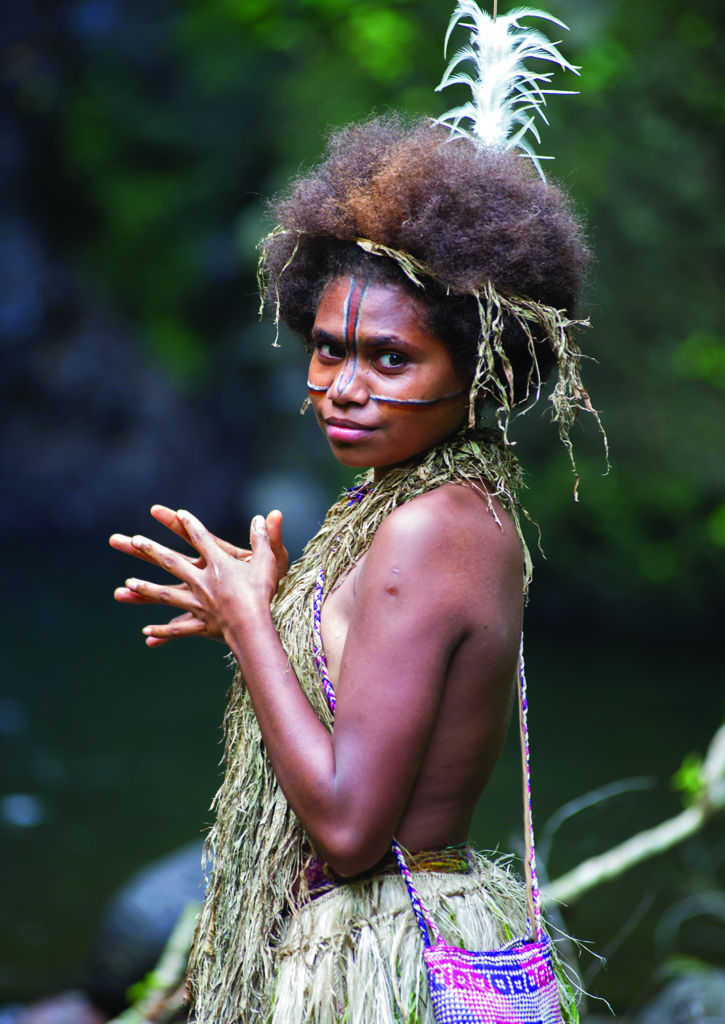
Perhaps more importantly, however, Tanna is representative of a continued, albeit gradual, swerve towards authenticity in the cinematic portrayal of indigenous peoples. Globally, films like Canada’s Atanarjuat: The Fast Runner (Zacharias Kunuk, 2001), the American-made Apocalypto (Mel Gibson, 2006), set in pre-Columbian Yucatán, and the South American Embrace of the Serpent (Ciro Guerra, 2015) have achieved acclaim for giving a voice and visibility to cultures that have otherwise been inaccessible to audiences. Closer to home, Australia bats well above the average in terms of telling stories by and about Aboriginal peoples (though we should, of course, always strive to do better), and hearing native languages on film and television – both of which aren’t as rare as they once were. We have certainly come a long way from when Australian cinema confined Aboriginal actors to playing roles as servants, mystics or outback savages, a trend that stretches as far back as the silent era of Australian cinema.[1]Bruce Lawrence Dennett, ‘The Genesis of Indigenous Australian Characterisations in Feature Films’, PhD thesis, Macquarie University, Sydney, May 2012. It even has echoes as recently as the 1980s, when Aboriginal characters were sidelined in films that dealt exclusively in Indigenous themes – as seen in the offensive exploitation genre efforts The Naked Country (Tim Burstall, 1985) and The Dreaming (Mario Andreacchio, 1988).
Tanna is representative of a continued, albeit gradual, swerve towards authenticity in the cinematic portrayal of indigenous peoples … giving a voice and visibility to cultures that have otherwise been inaccessible to audiences.
But Tanna is something else entirely. Much like Ten Canoes (Rolf de Heer, 2006) – a film that not only gave Dean and Butler inspiration as well as a visual aid to convince Tanna residents of their intentions,[2]Oliver Pfeiffer, ‘Australian Film Tanna to Tell Romeo and Juliet–like Tale in Melanesia’, SBS Movies, 28 July 2015, <http://www.sbs.com.au/movies/article/2015/03/12/australian-film-tanna-tell-romeo-and-juliet-tale-melanesia>, accessed 19 February 2016. but also shares an editor in Tania Nehme – Tanna tells a relatively simple story featuring the language and cultural idiosyncrasies of the local people. The filmmakers began the project after collaborating on the 2009 multi-award-winning documentary Contact and the 2013 television documentary series First Footprints, which spurred a desire to spend time immersed in and making a film about another non-Western culture.[3]Contact Films, Tanna press kit, 2015, p. 12. Joined by their families, the pair was taken in by the Yakel tribe for seven months, and eventually chose to adapt a local song about forbidden romance that led to changes in the Vanuatu tradition of cross-tribe marriage. The actors, all local tribespeople (lead actor Mungau Dain was chosen for the main role by both the directors and the Yakel simply ‘because he was the most handsome’), in turn found themselves re-enacting the true story of how two people came together under intense scrutiny and found love, only to have it torn apart in a Romeo and Juliet–like tragedy.[4]ibid., pp. 6–7. In this way, Tanna is more in line with some of Australia’s most acclaimed documentaries – notably Bob Connolly and Robin Anderson’s First Contact (1982) and Black Harvest (1992), as well as Joe Leahy’s Neighbours (Bob Connolly, 1989) and Cannibal Tours (Dennis O’Rourke, 1988) – which turned the lens on native Papua New Guinea cultures that, until only half a century earlier, had lived in relative seclusion from the world.
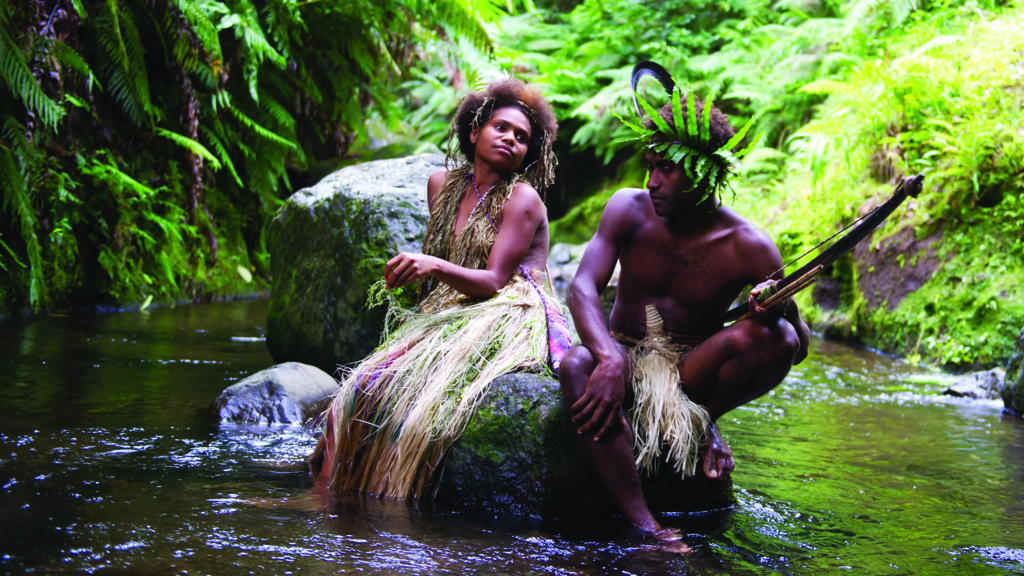
What allows Tanna to stand even taller is the dearth of authentic cinema about and set in the South Pacific. Typically, when a feature is filmed in this part of the globe, it is a Western production made by people using the region as little more than a backdrop for stories about their own kind. We have seen The Hurricane (John Ford, 1937), set in American Samoa; The Thin Red Line (Terrence Malick, 1998), in the Solomon Islands; Rebellion (Mathieu Kassovitz, 2011), in New Caledonia; several Tahiti-shot versions of the famed HMS Bounty tale, including In the Wake of the Bounty (Charles Chauvel, 1933) and two renditions of Mutiny on the Bounty (Frank Lloyd, 1935; Lewis Milesone, 1962), as well as The Bounty (Roger Donaldson, 1984), which was also filmed in French Polynesia and New Zealand. The lone Hollywood outlier is Rapa Nui (Kevin Reynolds, 1994), shot on Easter Island with a cast comprising people of colour, albeit directed, written and produced by white Americans – including Kevin Costner, who certainly is no stranger to appropriating native cultures and churning out glossy entertainments.
But likely the earliest movie made in this part of the world is Robert J Flaherty’s Moana (1926). This pseudo-documentary remains a powerful chronicle of the region despite the director having re-used the docufiction technique that he pioneered on his earlier and more well-known feature, the Inuit-centric Nanook of the North (1922) – a process that he justified by saying, ‘One often has to distort a thing to catch its true spirit.’[5]Robert J Flaherty, quoted in ‘The Lost Worlds of Robert Flaherty’, Harvard Film Archive, January 2015, <http://hcl.harvard.edu/hfa/films/2015janfeb/flaherty.html>, accessed 19 February 2016. The creation of Moana inspired Flaherty to return to the South Pacific to make a wholly dramatic piece of cinema, in collaboration with German legend FW Murnau, but artistic differences led to the American director dropping out of the project.[6]ibid. It would later become the Oscar-winning Tabu: A Story of the South Seas (1931).
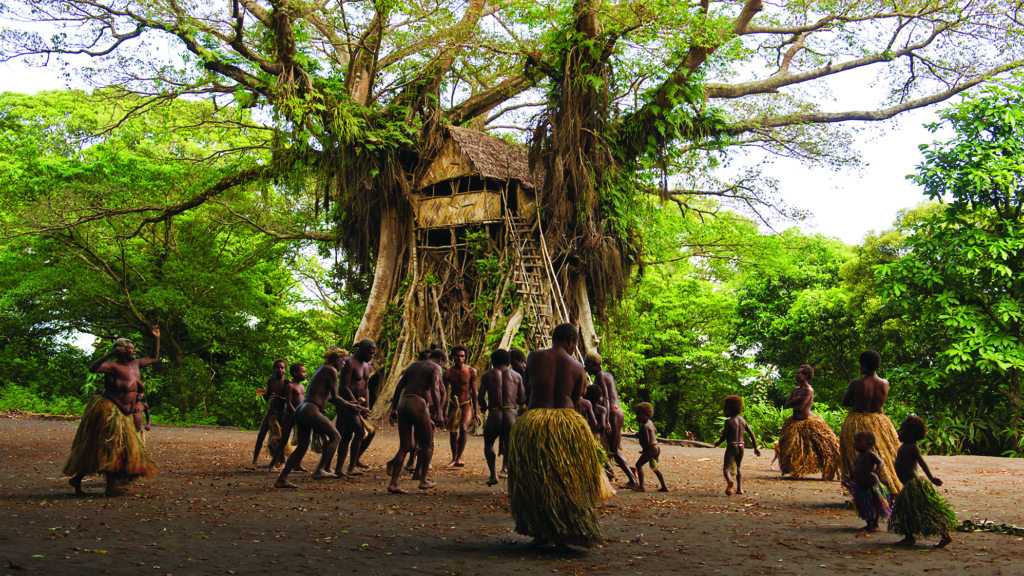
Murnau’s film seemingly serves as a dramatic blueprint for Tanna, as evident in many scene-to-scene similarities – from locals’ gaiety near waterfalls and watering holes, to its tribal meetings, central forbidden romance and jealous lovers. Dean and Butler’s film even once went by the title ‘Taboo’.[7]Pfeiffer, op. cit. But, whereas the 1931 film is clouded with an overriding sense of faraway exoticism – a trait that was no doubt important to its success – Tanna is blissfully devoid of it. It is hard to not spot the authenticity of the filmmakers’ work, especially when compared to older features from the Chips Rafferty era of South Pacific–set Australian cinema.[8]As a case in point, Lee Robinson and Marcello Pagliero’s Walk into Paradise (1956) advertised itself at the time as ‘the real story of New Guinea’, centring on ‘the most primitive people on the face of the earth’ whose ‘mistrust and hate are as deadly as the poisonous fangs of a snake’; see Walk into Paradise trailer, YouTube, 27 May 2011, <https://www.youtube.com/watch?v=-Qx9emeIows>, accessed 19 February 2016. Adding invaluable potency to Tanna’s story is the knowledge, for instance, that the Yakel people really are in a bloody dispute with a neighbouring tribe[9]Contact Films, op. cit., p. 7. (thankfully, it did not spill over during production), or that the stunning image of a lava-spitting volcano is a visual treat not just to our eyes but also to the actors, one of whom had never encountered such a glorious sight until asked to perform in front of it.[10]ibid., p. 10.
Dean and Butler have created a truly one-of-a-kind cinematic experience that thrills both as a marvel of filmmaking, and as a document of a world that, to many of us, would appear to be a land before time, safeguarded from the destructive arrival of the white man. The way of life captured in Tanna has not been altered to appeal to broader audiences: we hear the tribe’s own language, Nauvhal, and see them wear traditional items of clothing such as nambas (penis sheaths), grass skirts and headdresses – which the cast members even wore to the film’s red-carpet screening in Venice. This authenticity even extends to the minutiae of production. The directors made a concerted effort to keep the Yakel tribe abreast of the filmmaking process, allowing them into the makeshift editing suite built on the island.[11]Stephanie Bunbury, ‘Stars of Tanna from Vanuatu a New Look for Venice Film Festival’, The Sydney Morning Herald, 9 September 2015, <http://www.smh.com.au/entertainment/movies/stars-of-tanna-from-vanuatu-a-new-look-for-venice-film-festival-20150909-gji9oi.html>, accessed 19 February 2016. In what was no doubt the most unique premiere imaginable, the Yakel and other tribes convened to view their story – they were the first people in the world to see it – projected onto a white sheet strung up to a large banyan tree, only a few weeks after the island nation was devastated by Cyclone Pam.[12]Contact Films, op. cit., p. 11.
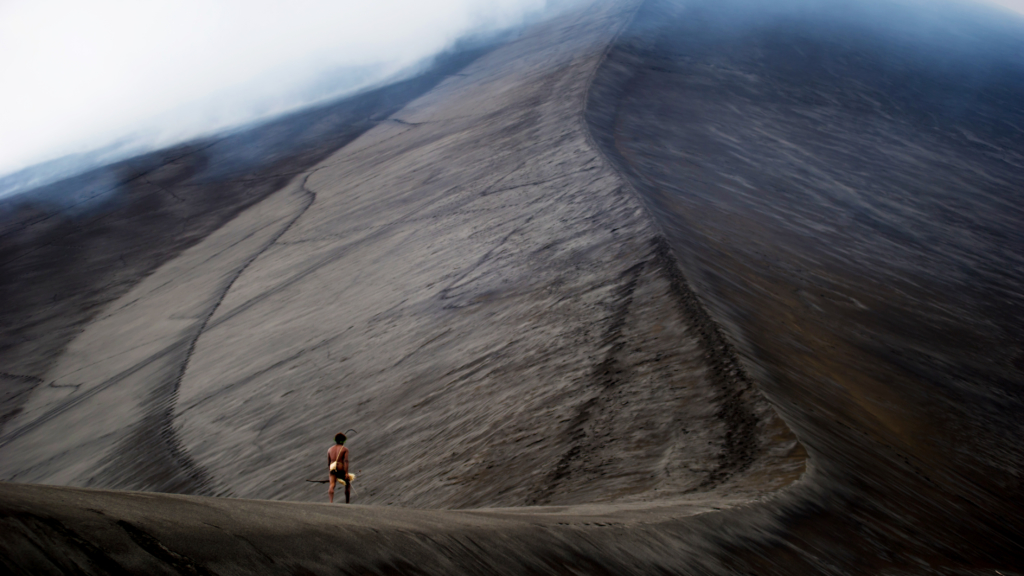
Indeed, native actors and filmmakers are increasingly making their impact on the cinematic world stage. The Land Has Eyes (Vilsoni Hereniko, 2004) was the first – and, as yet, only – feature film produced entirely in Fiji, and stars Sapeta Taito, who at the time had never even seen a film let alone been in one, alongside famous Maori actor Rena Owen of Once Were Warriors (Lee Tamahori, 1994) fame. It is hard to look past the film’s less-polished production values but, for those interested in stories about this region of the world, it remains an important cinematic artefact. More stylistically impressive, no doubt helped by the passing of time and the advancing of digital technology available to independent filmmakers, is New Zealand – Samoan co-production The Orator (2011). Described by director Tusi Tamasese, the descendant of a high chief, as ‘my image of what I see of growing up in Samoa’,[13]Tusi Tamasese, quoted in Peter Calder, ‘The Orator: Sounds of Silence’, New Zealand Herald, 1 October 2011, <http://www.nzherald.co.nz/entertainment/news/article.cfm?c_id=1501119&objectid=10755586>, accessed 19 February 2016. it was the first official film production from Samoa. And, even more recently, we have seen Beatriz’s War (Bety Reis & Luigi Acquisto, 2013), a story of love and war created in consultation with the survivors of the bloody Indonesian occupation of East Timor. Including dramatisations of traumatic real-life events and dialogue in the local Tetum language, it also marks the first feature film from East Timor.
In the case of Vanuatu specifically, another recent – albeit remarkably different – work that has reached Australian audiences is visual effects–heavy science fiction action-adventure Dinosaur Island (Matt Drummond, 2014). The film was shot both in the island nation and in Australia, and features indigenous tribespeople in key roles. Also on the horizon is Life Is Sweet (Peter Walker, 2016), a musical film that stars popular Vanuatu television actors, which originated as a stage production by the Wan Smolbag Theatre based out of Port Vila. It is spoken entirely in another native language of Vanuatu, Bislama, and – like Tanna – depicts struggles surrounding romance and being a woman in a patriarchal society.[14]Tim Barnsley, ‘The Sweet Life’, Australian Cinematographer Magazine, issue 68, December 2015, pp. 42–7.
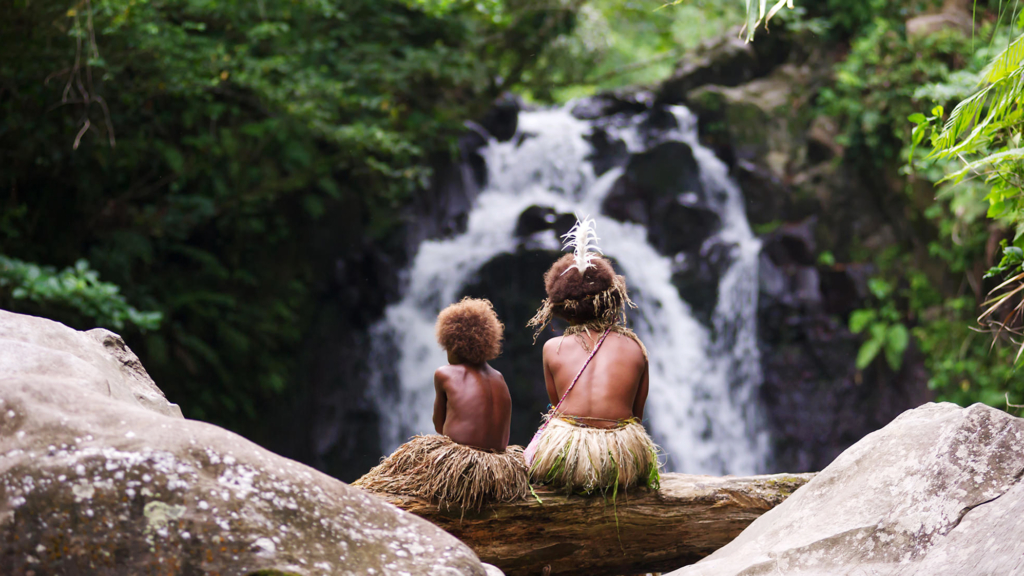
The cast of Tanna have left the bright lights of the festival circuit and returned to their lives in Vanuatu, while the film continues to screen in Australia and elsewhere. The Yakel may have little engagement with modern Western society, but their involvement in Dean and Butler’s film has certainly made its mark on today’s world and will live on for years to come. Tanna’s status as the only film in history (to date) to represent Kastom – native Vanuatu culture – already cements its importance, but its pure cinematic quality makes it essential viewing. Film lovers and critics, especially those who bemoan the lack of original visions on screen, ought to make this feature a priority. Hopefully, the success of Tanna can spur future filmmakers, particularly from the South Pacific region, to pick up a camera and make a movie. We need more stories from this part of the world, and we owe it to the filmmakers’ ingenuity to watch them.
Endnotes
| 1 | Bruce Lawrence Dennett, ‘The Genesis of Indigenous Australian Characterisations in Feature Films’, PhD thesis, Macquarie University, Sydney, May 2012. |
|---|---|
| 2 | Oliver Pfeiffer, ‘Australian Film Tanna to Tell Romeo and Juliet–like Tale in Melanesia’, SBS Movies, 28 July 2015, <http://www.sbs.com.au/movies/article/2015/03/12/australian-film-tanna-tell-romeo-and-juliet-tale-melanesia>, accessed 19 February 2016. |
| 3 | Contact Films, Tanna press kit, 2015, p. 12. |
| 4 | ibid., pp. 6–7. |
| 5 | Robert J Flaherty, quoted in ‘The Lost Worlds of Robert Flaherty’, Harvard Film Archive, January 2015, <http://hcl.harvard.edu/hfa/films/2015janfeb/flaherty.html>, accessed 19 February 2016. |
| 6 | ibid. |
| 7 | Pfeiffer, op. cit. |
| 8 | As a case in point, Lee Robinson and Marcello Pagliero’s Walk into Paradise (1956) advertised itself at the time as ‘the real story of New Guinea’, centring on ‘the most primitive people on the face of the earth’ whose ‘mistrust and hate are as deadly as the poisonous fangs of a snake’; see Walk into Paradise trailer, YouTube, 27 May 2011, <https://www.youtube.com/watch?v=-Qx9emeIows>, accessed 19 February 2016. |
| 9 | Contact Films, op. cit., p. 7. |
| 10 | ibid., p. 10. |
| 11 | Stephanie Bunbury, ‘Stars of Tanna from Vanuatu a New Look for Venice Film Festival’, The Sydney Morning Herald, 9 September 2015, <http://www.smh.com.au/entertainment/movies/stars-of-tanna-from-vanuatu-a-new-look-for-venice-film-festival-20150909-gji9oi.html>, accessed 19 February 2016. |
| 12 | Contact Films, op. cit., p. 11. |
| 13 | Tusi Tamasese, quoted in Peter Calder, ‘The Orator: Sounds of Silence’, New Zealand Herald, 1 October 2011, <http://www.nzherald.co.nz/entertainment/news/article.cfm?c_id=1501119&objectid=10755586>, accessed 19 February 2016. |
| 14 | Tim Barnsley, ‘The Sweet Life’, Australian Cinematographer Magazine, issue 68, December 2015, pp. 42–7. |
